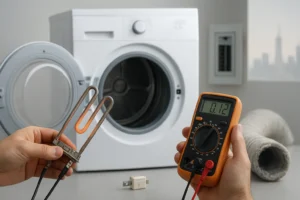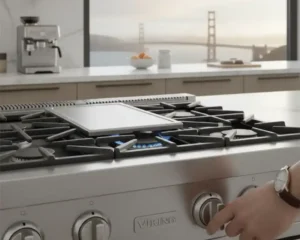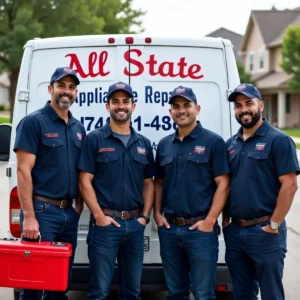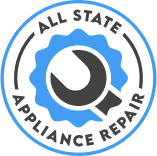A garbage disposal can leak from worn seals, loose connections, damaged internal components, cracked housing, faulty mounting assembly, or corroded discharge tubes, creating potential water damage beneath your kitchen sink. To identify the real source, inspect the sink flange area, side discharge connections, bottom reset button region, mounting bolts, drain hose attachments, and the unit’s main body for visible water accumulation or mineral deposits.
Common Causes of Garbage Disposal Leaking
Understanding the root causes of disposal leaks helps you diagnose the problem accurately and choose the most effective repair approach. Here are the primary culprits behind most leaking issues:
Deteriorated Sink Flange Seal: The rubber gasket between your disposal’s mounting assembly and sink flange naturally degrades over time, allowing water to seep through the connection point where the disposal meets the sink drain.
Loose Mounting Assembly: Vibration from normal operation gradually loosens the mounting bolts that secure your disposal to the sink, creating gaps where water can escape from the top connection area.
Worn Discharge Tube Connections: The side connections where your disposal connects to the drain pipe and dishwasher hose develop leaks when rubber gaskets deteriorate or clamps become loose from thermal expansion and contraction.
Internal Seal Failure: The internal seals within the disposal unit itself can break down due to age, chemical exposure, or excessive heat, causing water to leak from the bottom or sides of the main housing.
Cracked Disposal Housing: Physical damage from dropped objects, over-tightening connections, or manufacturing defects can create hairline cracks in the disposal body that allow water to escape.
Faulty Reset Button Seal: The rubber seal around the bottom-mounted reset button can deteriorate, creating a leak point that’s often mistaken for more serious internal damage.
Corroded Metal Components: Constant exposure to moisture and food acids can cause metal parts like bolts, clamps, and housing connections to corrode, compromising the watertight seal.
Improper Installation: Inadequate plumber’s putty application, incorrect mounting torque, or misaligned connections during installation can create immediate or delayed leaking problems.
Troubleshooting Tips for Garbage Disposal Leaks
Follow these systematic steps to diagnose and repair your leaking disposal, starting with the most common and easily fixable issues:
1. Turn Off Power and Water Supply: Shut off the disposal at the wall switch and unplug the unit from the electrical outlet beneath the sink to ensure complete safety during inspection and repair work.
2. Clean and Dry the Area: Thoroughly wipe down the entire disposal unit and surrounding pipes with a clean towel, then wait 15-20 minutes to see exactly where new water accumulation occurs.
3. Run Water and Observe Leak Points: Turn the water on briefly while watching carefully to pinpoint the exact location where water is escaping, noting whether it’s from the top, side, or bottom of the unit.
4. Check and Tighten Mounting Bolts: Use a wrench to carefully tighten the three mounting bolts located at the top of the disposal where it connects to the sink flange, turning clockwise until snug but not over-tight.
5. Inspect Discharge Tube Connections: Examine the side connections where pipes attach to your disposal, tightening the metal clamps with a screwdriver and checking for cracked or missing rubber gaskets.
6. Test Dishwasher Hose Connection: If your disposal connects to a dishwasher, ensure the drain hose clamp is tight and the rubber connection isn’t cracked or deteriorated from heat exposure.
7. Replace Sink Flange Seal: For top leaks, disconnect the disposal, remove old plumber’s putty from the flange, apply fresh putty in a continuous rope around the flange, and reinstall securely.
8. Check Internal Components: Look for water coming from the reset button area or main housing, which typically indicates internal seal failure requiring professional assessment or unit replacement.
9. Examine for Physical Damage: Inspect the disposal body for visible cracks, dents, or corrosion that could compromise the unit’s integrity and create multiple leak points.
10. Verify Proper Pipe Alignment: Ensure all connected pipes are properly aligned without stress or tension that could cause joints to separate or gaskets to fail over time.
11. Test Repairs Thoroughly: After completing any repair work, run water through the system for several minutes while monitoring all previously identified leak points for complete resolution.
12. Document Problem Areas: Keep notes about recurring leak locations and repair dates to help identify patterns that might indicate the need for complete unit replacement.
When to Replace Your Garbage Disposal
Replace your garbage disposal immediately if water is leaking from the main housing or reset button area, as these indicate internal seal failure that cannot be economically repaired. Units showing multiple leak points, visible cracks in the metal housing, or recurring problems after repeated repairs should also be replaced to prevent water damage and electrical hazards.
Consider replacement for disposals over 8-10 years old with any leaking issues, as aging internal components are likely to fail progressively, making repair costs exceed replacement value. If your disposal requires frequent repairs, produces unusual noises during operation, or shows signs of corrosion on multiple components, investing in a new unit provides better long-term value and reliability.
Conclusion
Addressing garbage disposal leaks promptly prevents costly water damage and maintains your kitchen’s functionality. While many leaks can be resolved with basic troubleshooting and seal replacements, knowing when to tackle repairs yourself versus calling professionals saves both time and money. Regular maintenance, proper usage habits, and early intervention when problems arise significantly extend your disposal’s lifespan and performance. For complex repairs or complete unit replacement, professional garbage disposal services ensure safe, code-compliant installation that protects your investment.






